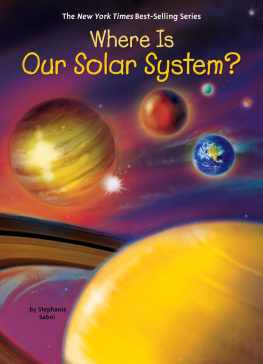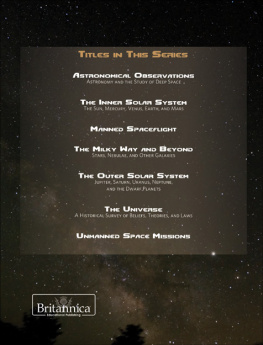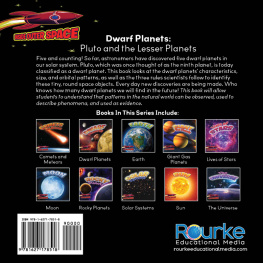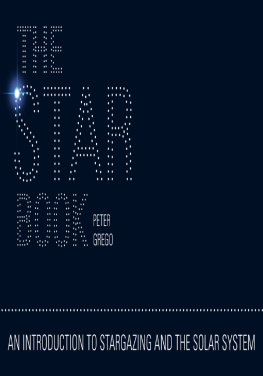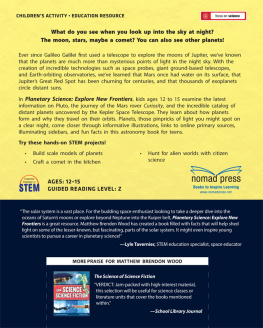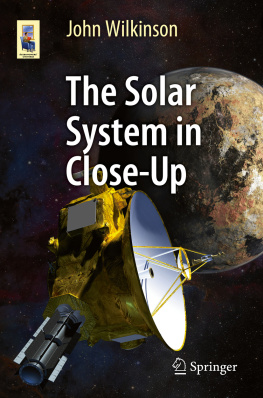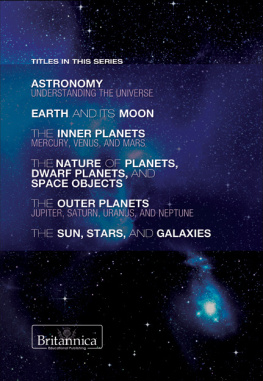THE NATURE OF PLANETS, DWARF PLANETS, AND SPACE OBJECTS
the solar system
THE NATURE OF PLANETS, DWARF PLANETS, AND SPACE OBJECTS
Edited by Michael Anderson

Published in 2012 by Britannica Educational Publishing
(a trademark of Encyclopdia Britannica, Inc.)
in association with Rosen Educational Services, LLC
29 East 21st Street, New York, NY 10010.
Copyright 2012 Encyclopdia Britannica, Inc. Britannica, Encyclopdia Britannica, and the Thistle logo are registered trademarks of Encyclopdia Britannica, Inc. All rights reserved.
Rosen Educational Services materials copyright 2012 Rosen Educational Services, LLC.
All rights reserved.
Distributed exclusively by Rosen Educational Services.
For a listing of additional Britannica Educational Publishing titles, call toll free (800) 237-9932.
First Edition
Britannica Educational Publishing
Michael I. Levy: Executive Editor, Encyclopdia Britannica
J.E. Luebering: Director, Core Reference Group, Encyclopdia Britannica
Adam Augustyn: Assistant Manager, Encyclopdia Britannica
Anthony L. Green: Editor, Comptons by Britannica
Michael Anderson: Senior Editor, Comptons by Britannica
Sherman Hollar: Associate Editor, Comptons by Britannica
Marilyn L. Barton: Senior Coordinator, Production Control
Steven Bosco: Director, Editorial Technologies
Lisa S. Braucher: Senior Producer and Data Editor
Yvette Charboneau: Senior Copy Editor
Kathy Nakamura: Manager, Media Acquisition
Rosen Educational Services
Heather M. Moore Niver: Editor
Nelson S: Art Director
Cindy Reiman: Photography Manager
Matthew Cauli: Designer, Cover Design
Introduction by Heather M. Moore Niver
Library of Congress Cataloging-in-Publication Data
The nature of planets, dwarf planets, and space objects / edited by Michael Anderson. -- 1st ed.
p. cm.(The solar system)
In association with Britannica Educational Publishing, Rosen Educational Services.
Includes bibliographical references and index.
ISBN 978-1-61530-566-7 (eBook)
1. PlanetsJuvenile literature. 2. SatellitesJuvenile literature. 3. Interstellar matterJuvenile
literature. I. Anderson, Michael.
QB602.N38 2012
523.2dc22
2011001380
Cover, back cover, pp. www.istockphoto.com/Felix Mckel; interior background www.istockphoto.com/David Birkbeck
CONTENTS



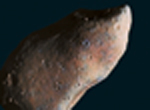
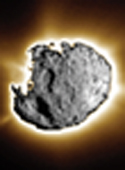

introduction

T he skies hold many marvels. Among the most fascinating are planets, dwarf planets, and space objects, such as asteroids, comets, and meteors. Astronomers view these celestial bodies through powerful telescopes and send out space probes and satellites to record data and take photographs. These pages will take you on your own exciting journey among planets and space objects.
Planets have long been known to be large, natural bodies that orbit around the Sun, but the specifics of the definition have changed over the years. The most recent definition includes eight planets in the solar system: Mercury, Venus, Earth, and Mars (known as inner planets), and Jupiter, Saturn, Uranus, and Neptune (outer planets). From 1930 until 2006, Pluto was considered a planet, too. But after scientists discovered several other distant bodies similar to Pluto orbiting the Sun, Pluto was reclassified as a dwarf planet.
Most astronomers believe that the solar system started developing around 4.6 billion years ago from a large cloud of gas and dust called the solar nebula. Gravity caused the matter to contract and the cloud began to spin, flattening into a disk. The Sun formed in the center, and the planets formed from remaining material spinning around the Sun. Collisions between the forming planets and smaller bodies may have caused impact craters on their surfaces and even the formation of Earths Moon.
Dwarf planets are smaller than planets and have not cleared away icy and rocky debris from around their orbits. Cold, dark, distant Pluto, named after the Roman god of the underworld, is probably the best-known dwarf planet. It is part of what is known as the Kuiper belt, a remote region with many small, icy bodies orbiting the Sun. The dwarf planets Eris, Makemake, and Haumea also belong to the Kuiper belt. Ceres, another dwarf planet, orbits the Sun from within the main asteroid belt.
Asteroids are large pieces of rock and metal that orbit the Sun, usually in the zone between the orbits of Mars and Jupiter. Small asteroids regularly strike Earths surface, but large asteroids crash much less frequently. In the past, such impacts may have caused earthquakes or sea wavesand maybe even the extinction of the dinosaurs.
Comets are another type of space object. The only permanent part of a comet is its nucleus, or core. The nucleus, made up of ice and dust, is commonly called a dirty snowball. When a comet is near the Sun, it develops a huge cloud of gas and dust, called the coma, as well as one or more dusty or gaseous tails. The comets head is made up of the nucleus and the coma. The tail can be more than 60 million miles (100 million kilometers) long.

Comet Hale-Bopp. Jamie Cooper/SSPL via Getty Images
The trails of light called falling stars are actually little pieces of metallic or stony material that vaporize upon entering Earths atmosphere. Before entering they are called meteoroids, and once within Earths atmosphere they are called meteors. Most meteors vaporize completely before reaching the ground. Sometimes, though, a piece survives and hits the ground. Then it is called a meteorite. Although meteorites consist of materials found on Earth, the proportions are radically different from anything on the planet.
As you watch for meteors or focus a telescope on a distant planet, you see just a tiny fraction of what is in space. Scientists have a battery of technology at their fingertips to study the mysteries of space, but they all started like you: by gazing into the sky with a desire to learn.
chapter 1
WHAT IS A PLANET?

T he relatively large natural bodies that revolve in orbits around the Sun or other stars are called planets. The term does not include small bodies such as comets, meteoroids, and asteroids, many of which are little more than pieces of ice or rock.
Next page







